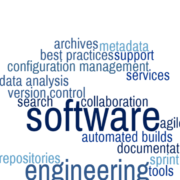Six steps help with the strategic selection of a system for training and further education in the company.
Strategic planning is better than an ad hoc decision. The demands on companies are constantly changing today. For HR managers, this means a never-ending challenge. They are intended to ensure that employees have the required qualifications in areas such as IT or compliance and acquire skills for new types of collaboration – from working with new tools and systems to leadership skills for today’s and tomorrow’s working world. A central, modern learning management system (LMS) or a learning management experience platform (LMXP) can help to record qualifications in the workforce and build new skills. Such a system should ideally be deployed across the enterprise. With isolated solutions in individual departments, the transparency of the skills available in the company is lost, and it is also not possible to ensure a uniform standard for qualifications. Such a system is, therefore, a strategic investment. HCM expertSumTotal Systems has outlined six steps to help organizations make informed, factual decisions about a learning management system.
In a webinar last month, SumTotal asked approximately 200 participants how their companies plan for employee development. For the majority of those surveyed, planning is done by the specialist departments (74 percent). For 59 percent of the participants, the current need was the decisive factor, or the responsibility lay with the HR department (56 percent). Only 33 percent of the companies plan the topic strategically, involving management and corporate goals. When asked which areas the companies want to expand their offers for further training, additional learning and course formats were at the top of the list for 84 percent. The following topics followed: curated learning/learning paths (62 percent), content on more issues (57 percent), and range in more languages (25 percent).
“Solutions for internal training and professional development programs, so-called LMS or LXP, provide a good basis for supporting employee development and building competencies,” Doris Pearce-Niederwieser, Customer Sales Director at SumTotal Systems. “When choosing a solution, one should above all ask what the main objectives are: Is the main motivation to convey mandatory content based on compliance requirements? Do you want to react faster to industry changes and new conditions? Is it about the further development of certain or all groups of employees? The next step is to check which system offers suitable content and formats for these objectives, which enable employees to integrate learning into their everyday work.
Six steps for a strategic approach to system selection
Step 1: Document goals and get stakeholders on board
The first step should be to document the reasons for acquiring and evaluating a new LMS solution. Capture issues using your current solutions and the expected benefits a new LMS or LMXP should deliver. This step should not be carried out by one person or department alone if possible. Involving key stakeholders from the start will speed up the selection process and also increase the likelihood of securing funding.
Step 2: Prioritize requirements
Once the stakeholders have agreed on the priorities related to the new system, the next step is to collect and prioritize the system requirements. Most organizations have the following minimum requirements:
·Compliance
The system must meet legal requirements and industry regulations or be certified accordingly.
· Ease of use –
A simple and intuitive application is increasingly crucial for accepting and using a system in stressful everyday work.
·Integration with Existing Systems
the solution should integrate with existing systems, such as talent management or performance management.
·Content Curation
Curated content based on the user profile and the current state of knowledge helps users find suitable training courses and offers more quickly and accelerates the development or expansion of skills and qualifications.
· Analysis functions
Analysis and reporting functions help get more transparency about existing qualifications in the workforce and the efficiency of the training.
·Scalability
Expanding the use of the system when there is an urgent need or in the medium term for additional users, course formats, languages, etc., is also a core requirement for many companies.
Step 3: Pre-exploration of LMS-LMXP providers
There are hundreds of providers on the market. However, based on the previous list of requirements, it should be easy to do a pre-exploration and rule out providers.
Step 4: Detailed Request for Proposal (RFP) Requirements List
Prepare a detailed list of all the requirements and selection criteria you plan to evaluate and compare vendors. For example, conditions can be organized by assigning them a level of importance by functional or process area—from must/critical to important but not currently essential to nice-to-have or optional. If you plan to deploy your new LMS in phases, indicate which step each requirement is likely to be needed. You can also define four to six common use cases with your stakeholders. Each scenario should contain a detailed step-by-step description of how a specific user or
Step 5: Evaluation of the providers (shortlist)
Prepare an evaluation scorecard that will be used to compare vendor responses to the Request for Proposal (RFP). In addition to product functions, the evaluation criteria usually include product roadmaps, Application scenarios, customer references, and feedback on the solution from customers of the provider and partners and analysts. Other criteria are, for example, the response time and quality of the answers to your inquiries, the general experience when interacting with the provider, and the pricing.
Step 6: Decide on a provider.
In the final stages of vendor selection, you should consider conducting reference checks. You should go beyond pure product functionality and look at the vendor’s ability to work together. It is advisable to ask the reference customers questions such as: What are the most important learning advantages you have achieved with the solution? What are the overall business benefits you have realized with the system? Did the vendor deliver the system as promised, on time, and within budget? What is your experience with the provider’s service team? Looking back, what would you have done differently with your project?
Also, make sure the system is future-proof – that is, that the LMXP or LMS vendor can deliver new features and keep you updated on their roadmap plans and other innovations because you want to be sure that your new LMS supports both the current learning needs of your company and the future needs that are not yet fully defined.
After completing these steps, you should have all the information you need to decide on a provider. When you present your arguments to the budget officers, you can submit a convincing business case for a new LMS or LMXP.





















Comments